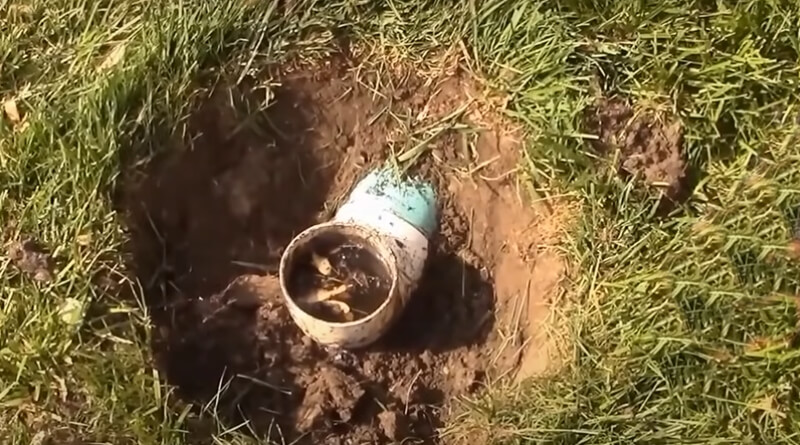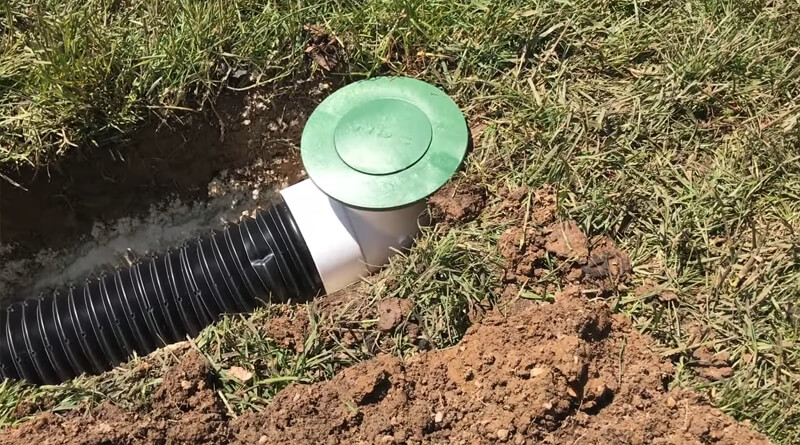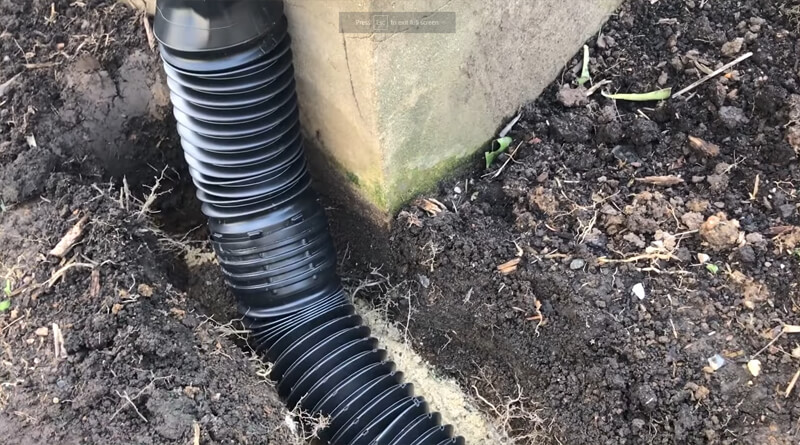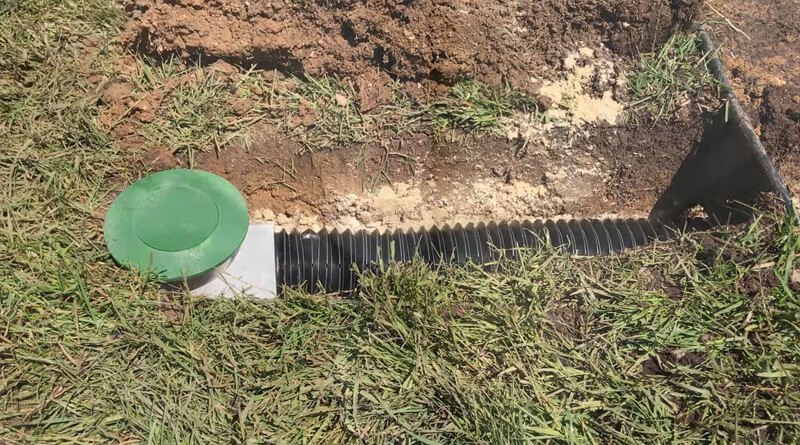Hidden Risks of Buried Downspouts
When it comes to protecting your home from water damage, there are few things more important than proper drainage. Downspouts play a crucial role in directing rainwater away from your home’s foundation. While it may seem like a good idea to bury your downspouts to improve your home’s curb appeal, it can actually lead to some serious risks that you may not be aware of.
Buried downspouts can cause foundational damage, basement flooding, and even attract pests. In this post, we’ll explore the hidden risks of buried downspouts and what you need to know in order to protect your home from water damage. We’ll discuss the importance of proper drainage, the problems that can arise from buried downspouts, and what you can do to ensure that your home stays dry and safe.
What are downspouts and why are they important?
Downspouts are an important component of any rainwater management system. They are vertical pipes that are used to carry rainwater from the gutters on the roof to the ground, where it can be directed away from the home’s foundation. Downspouts are critical for preventing water damage to the home’s walls, landscaping, and foundation.
The primary function of downspouts is to prevent rainwater from pooling around the foundation of the home. Without downspouts, rainwater would run off the roof and collect around the perimeter of the home, which can lead to a host of problems including structural damage, mold growth, and basement flooding.
In addition to their functional benefits, downspouts also play an important role in the aesthetics of a home. They are available in a variety of colors and styles to match the home’s exterior, and can even be customized to blend seamlessly with the architecture.
Buried Downspouts Problems
When it comes to managing rainwater and drainage on your property, buried downspouts might seem like an attractive option. After all, they offer a neat and tidy solution that doesn’t disrupt the visual appeal of your home. However, buried downspouts come with some hidden risks that homeowners need to be aware of.
One of the biggest risks of buried downspouts is the potential for blockages. Over time, leaves, twigs, dirt, and other debris can accumulate in the buried pipes, leading to blockages that can cause water to back up and overflow. This can lead to water damage to the foundation of your home, basement flooding, and other serious issues that can be costly to repair.
Another risk of buried downspouts is that they can be difficult to access and maintain. Unlike above-ground downspouts, buried ones are hidden from view and can’t be easily inspected for signs of damage, wear, and tear, or blockages. This can make it harder to identify problems before they become serious, leading to more extensive repairs and higher costs.
Buried downspouts can also pose a risk to your property’s drainage system. If the buried pipes are not properly installed or are not graded correctly, water can become trapped and cause erosion or damage to landscaping features.
Issues Caused by Buried Downspouts
Buried downspouts have become a popular alternative to traditional above-ground downspouts in recent years. The idea of hiding unsightly pipes underground and directing rainwater away from the house is certainly appealing. However, there are some common issues caused by buried downspouts that homeowners should be aware of.
One of the most common problems with buried downspouts is clogging. Over time, debris such as leaves, dirt, and twigs can accumulate in the pipe, leading to blockages. When this happens, rainwater can back up and cause damage to the foundation of your home. This can result in costly repairs and extensive water damage.
Another issue that can arise with buried downspouts is freezing. In colder climates, water trapped in the pipe can freeze and expand, causing damage to the pipe itself or even the foundation of your home. This can lead to cracks and leaks, which can be expensive to repair.
Finally, buried downspouts can be difficult to access for maintenance and repairs. Unlike above-ground downspouts, which are easily visible and accessible, buried downspouts require excavation to access. This can make repairs more expensive and time-consuming.
How to identify if you have buried downspouts
Identifying if you have buried downspouts can be a difficult task, but it is important that you know whether you have them or not. One of the easiest ways to identify if you have buried downspouts is to start at the top of your gutters. Look for the vertical pipes that run down the side of your house, and follow them to where they connect with the ground. If you see an elbow joint, and the pipe disappears into the ground, then you might have a buried downspout.
Another way to identify buried downspouts is to look for water pooling around the base of your house during heavy rain. If you notice that the water does not flow away from your property as it should, then it could be an indication that you have a buried downspout.
Importance of proper drainage
Proper drainage is crucial when it comes to buried downspouts. Without it, water can accumulate and cause a variety of problems. For instance, water can seep into the foundation of your home, causing significant damage over time. This can weaken the structure of your home, and lead to costly repairs.
Stagnant water can become a breeding ground for insects like mosquitoes, which can carry diseases. Additionally, water accumulation can lead to soil erosion, which can destabilize your yard, and even your neighbor’s property if the erosion is severe enough.
To avoid these issues, it’s important to ensure that proper drainage is in place. This includes making sure water is directed away from the foundation of your home, and that there is enough slope to allow for water to flow away from your property.
Regularly inspect your downspouts and drainage systems to ensure they’re working as intended, and make repairs or improvements as necessary. By taking these steps, you can avoid the hidden risks associated with buried downspouts, and protect your property for years to come.
How to fix the problem of buried downspouts
If you have buried downspouts that are causing some issues, you’ll need to address the problem sooner rather than later. The first step is to locate the buried downspout exit. Depending on how it was installed, there are a few ways to find this out. If you’re lucky, the exit is visible, and you can go ahead and dig up the buried pipe. If not, there are other ways to locate the pipe.
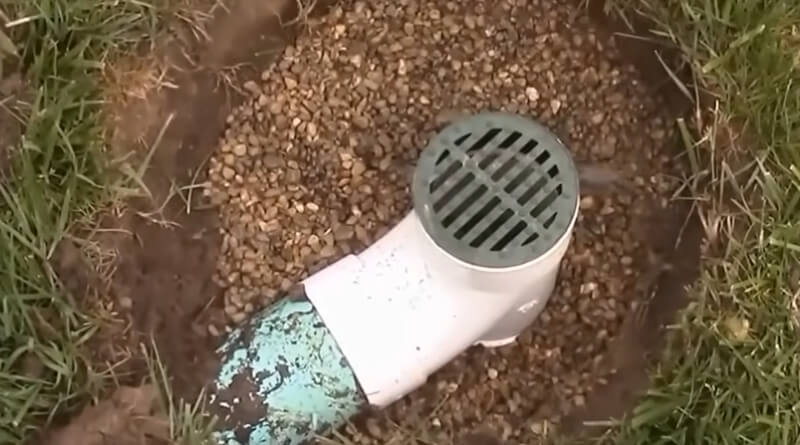
Once you have found the exit, you’ll need to dig up the pipe and assess the damage. Depending on how long the downspout has been buried, there could be a few issues to address. For example, the pipe may have been crushed by the weight of the soil or may have deteriorated over time due to exposure to moisture.
If the pipe is damaged, it will need to be replaced. In some cases, it may be possible to repair the pipe, but in most cases, it’s better to replace it altogether. When replacing the pipe, be sure to choose a high-quality material that is designed to withstand the elements.
Once the new pipe is installed, you’ll need to make sure that it is properly graded to ensure that water flows away from your home’s foundation. If the pipe is not graded correctly, it could cause water to pool around your foundation, which could lead to serious structural damage over time.
Alternatives for Redirecting Water
Redirecting water effectively is important to prevent any risks associated with buried downspouts. One of the first things you should consider is the location where you want to redirect the water. You should avoid redirecting water to areas that are already saturated or have poor drainage, as this can cause flooding and damage to the surrounding landscape.
Rain garden
A great option is to redirect the water to a rain garden. A rain garden is a shallow depression in your yard that is designed to collect and filter water runoff. The plants and soil in the rain garden act as a natural filtration system, removing pollutants from the water before it is absorbed into the ground. This not only helps to prevent erosion and flooding but also helps to improve the quality of the water that is discharged into nearby waterways.
Rain barrel
A rain barrel is a large container that collects and stores rainwater that can be used for irrigation purposes. This is a great way to conserve water and reduce your water bill, while also helping to prevent downstream flooding and erosion.
Permeable pavers
Permeable pavers are designed to allow water to filter through the surface and into the ground below, reducing the amount of runoff that is generated. This can be a great option for driveways, patios, and walkways, as it not only helps to prevent flooding and erosion but also helps to reduce the amount of heat absorbed by the surface, reducing the heat island effect in urban areas.
Benefits of Proper Drainage
Proper drainage is essential for any home or property. Without it, water can cause significant damage to the foundation, the landscape, and even the interior of the property. Ensuring that water is properly drained away from the property, can prevent costly repairs and other issues.
Prevent soil erosion
When water is not properly drained away from the property, it can cause soil erosion. This can lead to uneven landscapes, damaged plants, and even damage to the foundation of the property. By ensuring proper drainage, you can keep the soil in place and prevent these issues from occurring.
Prevent flooding
When water is not properly drained away from the property, it can cause flooding. This can lead to water damage inside the property, damage to the foundation, and other issues. By ensuring that water is properly drained away from the property, you can prevent flooding and the associated damage.
Improve Aesthetics
Proper drainage can also improve the aesthetics of the property. When water is not properly drained away from the property, it can leave pools of water, mud, and other unsightly issues. By ensuring proper drainage, you can keep the property looking great and prevent these issues from occurring.
How to maintain your downspouts
Maintaining your downspouts is essential in keeping your home protected from water damage. Neglecting your downspouts can cause serious damage to your foundation, walls, and landscaping. It’s important to keep them clean and free of debris, especially during the fall when leaves and other debris can clog them up.
Clean Downspouts Regularly
You can use a hose to flush them out or use a plumber’s snake to remove any blockages. It’s also important to make sure that the downspouts are properly connected to the gutters and that there are no leaks.
Downspout extension
If you don’t bury the downspout, a downspout extension will help to direct water away from your home’s foundation and prevent water damage. You can also install a downspout filter to prevent debris from getting inside and clogging up the downspouts.
Regular inspections
Look for signs of damage or wear and tear, such as rust, cracks, or holes. If you notice any issues, repair or replace the downspouts as needed. It’s better to catch and fix any problems early on before they cause serious damage to your home.
Conclusion and final thoughts.
Buried downspouts may seem like a good idea at first, but they come with hidden risks that can lead to serious problems. From foundation damage to water accumulation, buried downspouts can cause more harm than good. It’s important to consider the location of your downspouts carefully and take steps to redirect the water away from your home’s foundation.
Regular maintenance of your gutter system is also important to ensure that water is flowing properly and not causing any damage. If you’re experiencing any issues with your downspouts or gutters, it’s best to consult with a professional who can provide expert advice and solutions.
We hope that our blog post on the hidden risks of buried downspouts has been informative and helpful. While burying downspouts might seem like a convenient solution, it can actually lead to serious problems for your home’s foundation and overall health. By understanding the risks and taking action to address them, you can protect your home and avoid costly repairs down the line. Don’t forget to share this information with your friends and family, so they can protect their homes too!

